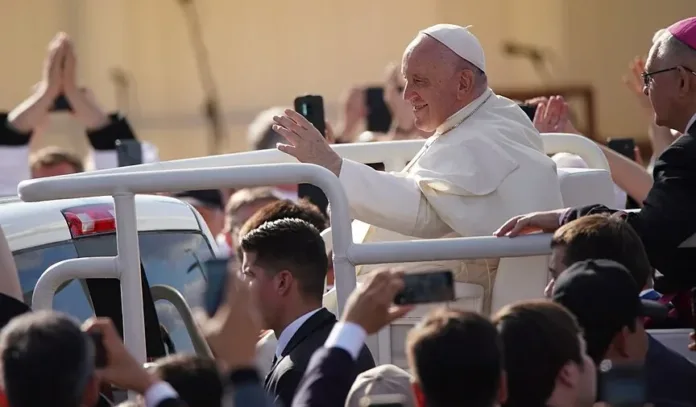Tears flow and prayers rise as the world pays final respects to the beloved pontiff
The Vatican has opened its gates to a global tide of sorrow. From the first light of Wednesday, mourners have begun gathering inside the magnificent St Peter’s Basilica, where the body of Pope Francis lies in a simple wooden coffin, dressed in red vestments, his mitre resting gently atop his head.
The pontiff, who passed away on Easter Monday at the age of 88, spent his final hours in the serenity of the Domus Santa Marta, the Vatican guesthouse he chose to call home. Vatican officials confirmed that he succumbed to complications from a stroke and heart failure. His death has triggered an unprecedented outpouring of grief, reverence and reflection.
Cardinal Pietro Parolin, the Vatican’s secretary of state, stood solemnly over the open coffin on Tuesday, his prayers offering the first of many tributes from both clergy and the laity. Images released by the Vatican show a man of peace, still in death, surrounded by candlelight and silence. This is no ordinary farewell—it is history unfolding in sacred stillness.
Over the next three days, tens of thousands are expected to pay their respects. Pilgrims from across the globe continue arriving in Rome, many with tears in their eyes, others clutching rosaries, as the bells of St Peter’s ring in mourning. For many, this is a pilgrimage of the soul—a final audience with a Pope whose legacy of humility and justice will echo far beyond the marble pillars of Vatican City.
The funeral will take place this Saturday at 9am UK time. In a break from long-standing tradition, Francis will not be buried in the Vatican Grottoes beneath the basilica, but instead at the Basilica of Santa Maria Maggiore. The decision aligns with his own wishes and his enduring connection to the Roman people.
Embed from Getty ImagesPope Francis had previously altered burial customs, discarding the three-coffin tradition in favour of a single casket made of wood and lined with zinc. Simplicity was his hallmark, even in death.
After the funeral rites conclude, the Church will observe a nine-day mourning period, known as the “novendiali.” Following this, the conclave to elect his successor will convene sometime between 5 and 10 May—a solemn process cloaked in secrecy, but one that signals the continuity of the papal legacy.
World leaders have joined the chorus of tributes. Labour leader Sir Keir Starmer described Francis as “a quite remarkable man,” praising his lifelong dedication to fairness and compassion. Similar sentiments have poured in from heads of state, spiritual leaders, and ordinary citizens alike—each echoing a sense of deep personal loss.
Though his voice has been silenced, Pope Francis’s message resounds louder than ever. As the faithful file past his coffin, there is no spectacle—only quiet unity, spiritual reckoning, and a goodbye that feels too soon.
